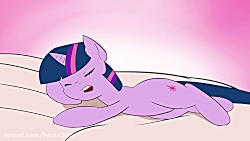

We need designers to design for appropriate lifecycles, by selecting materials and constructions that serve a product’s use and function. Answering this question draws attention to current design-function mismatches, such as the pervasive use of long-lasting synthetic fiber in the production of trend-focused fast fashion items.

This would require us to ask what is the most logical and sustainable design for this garment, considering the function that it will serve for the consumer. Therefore a first and fundamental change is to refocus attention on the user and the function that the garment in question plays for them. However, the user is a nebulous actor in the mind of many apparel designers, whose wishes are often assumed or deliberately steered. Firstly, let’s consider the use phase in other design fields, it is not unusual to follow a user-centered philosophy, where the focus is on creating a product that answers the needs and wants of the end-user. To transition to circular design, apparel professionals need to expand their horizons and to understand the use and end-of-use phases of a garment’s lifecycle. This means that what happens to a T-shirt past the point-of-sale is often out of sight and out of mind for the product team who are informing what next season’s collection will look like.īut 80 percent of a product’s environmental impact is decided on the design table, so the sketches we make, whether on paper, Clo3D or Illustrator, provide an incredible opportunity for positive impact throughout the chain. Most apparel professionals today were trained to design and produce garments with the aesthetics and end-price point rather than the end-user or end-of-life of the garment in mind.

(Re)education is one promising avenue - and there is a lot to learn. So how can we best equip them to transform the industry from the inside out? While the infrastructure to support such a system still needs investment, considering the technologies, solution providers and innovations already available - from automated sorting technologies that enable textile-to-textile recycling such as the Fibersort to third-party providers such as The Renewal Workshop or ThredUP - there is a trove of opportunities for the industry to get started with.īut the textiles system, like all other human-made systems, is made of and heavily relies on people - people who have been trained differently, who find it difficult to navigate the sea of options available to them and who might lack the skills and knowledge they need to even act on these opportunities.
Clo3d spiner how to#
For many others, however, the question of how to go from here - our current linear system - to there - a circular, zero waste textiles system - is still largely unanswered. For some, setting these goals was just the step they needed to kick-start their transition.

In 2017, the Global Fashion Agenda provided important pointers as to where the industry should go with the 2020 Circular Fashion System Commitment. For most apparel brands and retailers, "where do we start?" is an important question on their way to circularity.


 0 kommentar(er)
0 kommentar(er)
